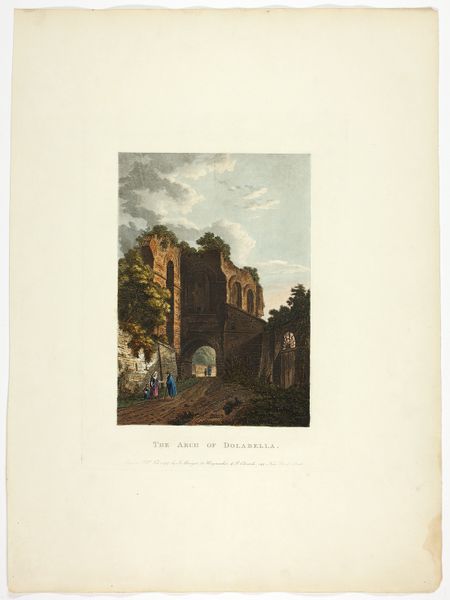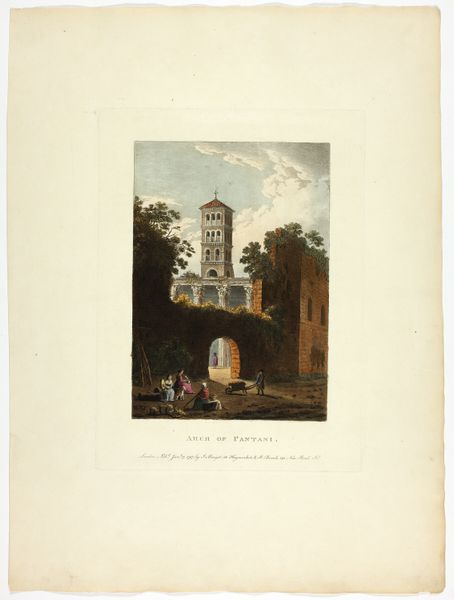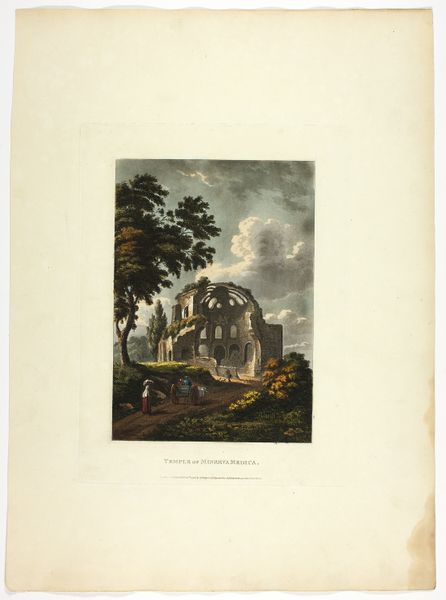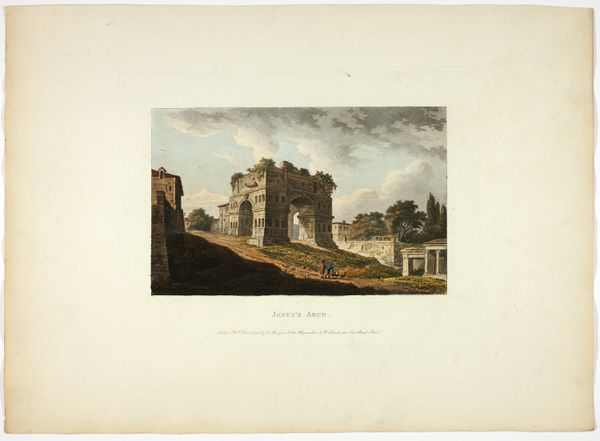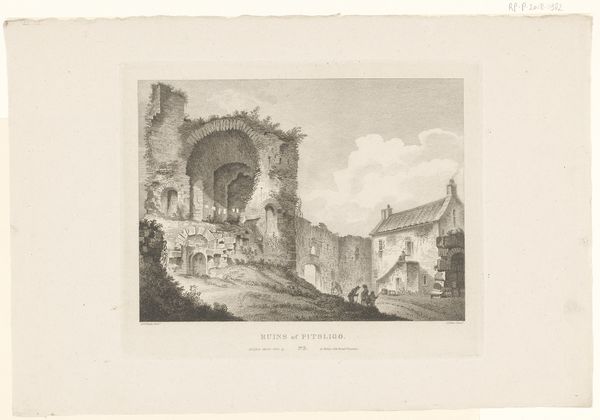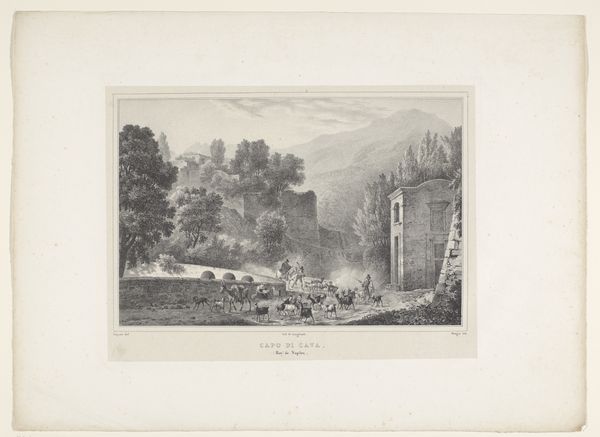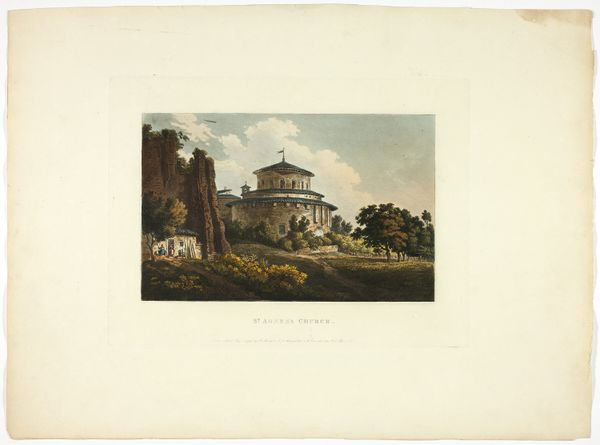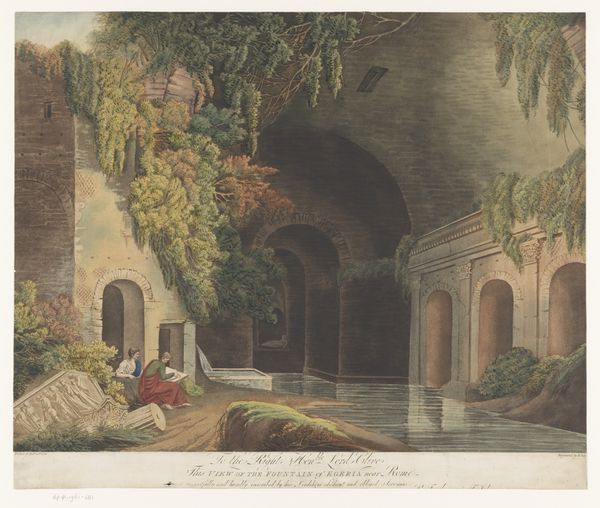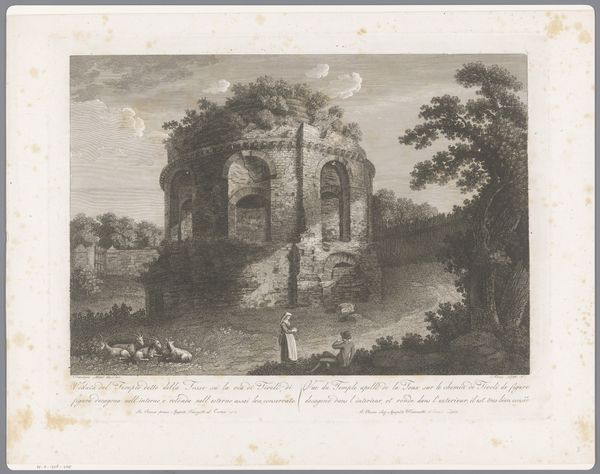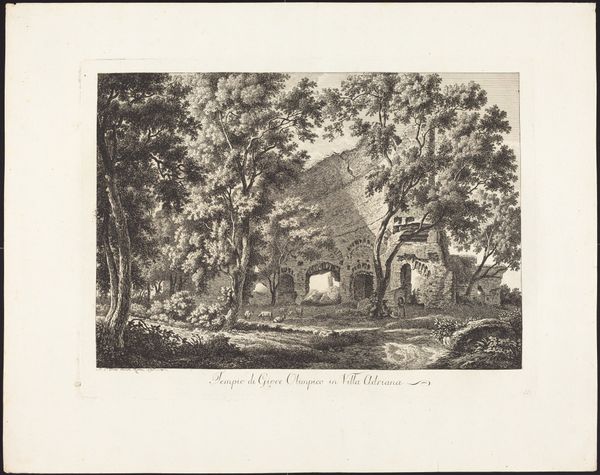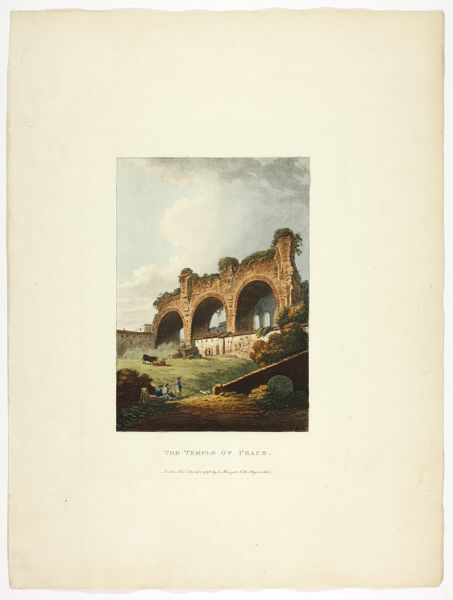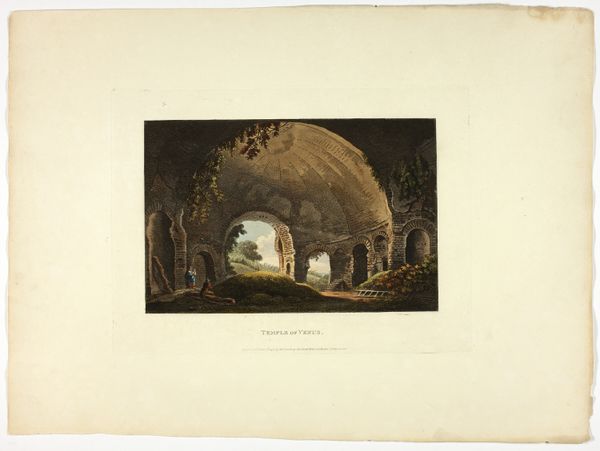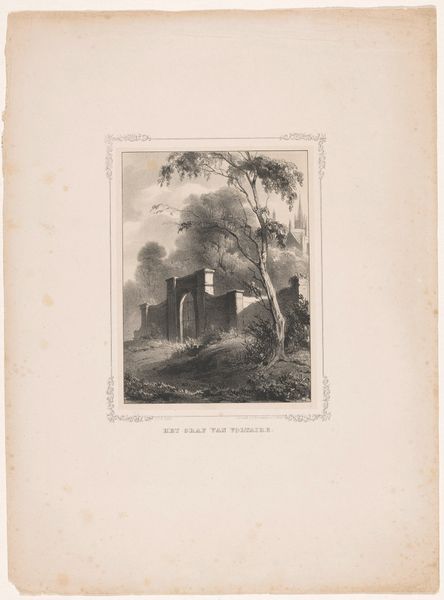
The Gate of St. Sebastian, plate seventeen from the Ruins of Rome c. 1796
0:00
0:00
drawing, print, paper, watercolor
#
drawing
# print
#
landscape
#
paper
#
watercolor
#
romanticism
#
cityscape
#
watercolour illustration
#
history-painting
Dimensions: 448 × 330 mm (sheet)
Copyright: Public Domain
Curator: There's something so dreamlike about this rendering. Editor: This is "The Gate of St. Sebastian, plate seventeen from the Ruins of Rome," dating to around 1796. It's a watercolor and print on paper, currently residing here at the Art Institute of Chicago, created by M. Dubourg. And I agree, it feels lifted from a very peaceful dreamscape. Curator: That’s exactly it—the gentle colours, that hint of sunlight breaking through… but at the same time, there's this undeniable sense of monumental permanence, almost like a stage set for an epic, historical drama. Do you feel that, or am I just projecting a screenplay I have stuck in my mind? Editor: No, no, I absolutely see what you mean. The gate itself, the trees clustered on top, even those towering... they're all dripping with symbolic weight. The gate, for example, is an obvious symbol for liminality, transitions and journeys into the unknown. Curator: Oh, I like that, yes! A journey—in more ways than one, I think. It has the gravitas of history, those grand structures, yet it’s softened with that Romanticism… the past as a faded memory, both majestic and yielding to time and decay. Editor: Absolutely, the Romantic movement certainly prized history, especially Rome, because Rome presented a grand narrative with dramatic contrasts—greatness alongside palpable ruins, both literally and metaphorically. The crumbling yet stalwart stonework... a signifier of resilience but also impermanence. Curator: But it's not grim, is it? The light—there's so much light suggesting optimism or… hope. Or perhaps a new beginning of sorts? A traveler who emerges on the other side... Editor: Perhaps, or it’s the human tendency to seek optimism, maybe even create it when the crumbling grandeur could also inspire darker reflection. And it invites our interpretation. These little figures walking away: they become us walking away or into this history, toward our personal meaning. Curator: So wonderfully put—yes! The artist created a frame for thought and feeling, the history both burdens us and allows us to consider all human experiences with clarity and passion. A really beautiful paradox. Editor: Precisely, a mirror reflecting grand themes and deeply personal resonance.
Comments
No comments
Be the first to comment and join the conversation on the ultimate creative platform.
